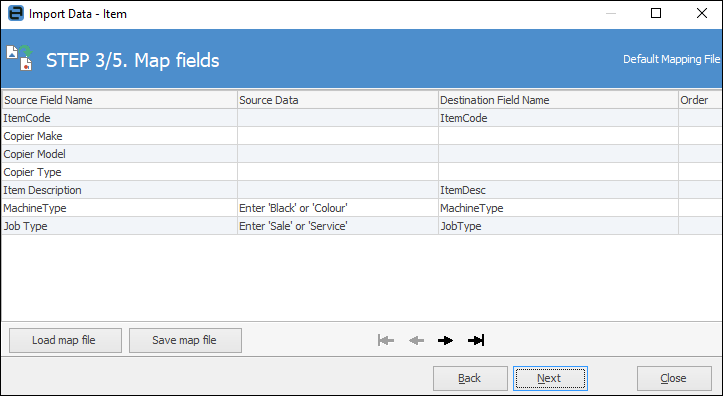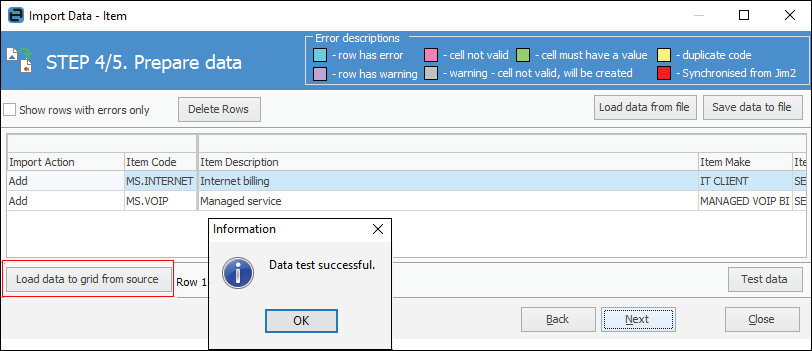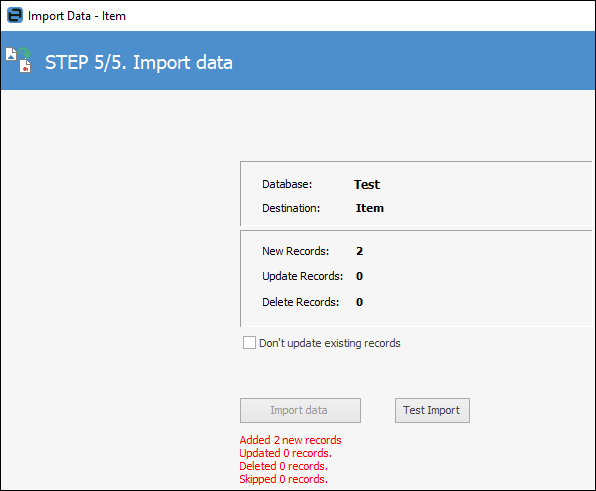
Before importing Items into Jim2, the data must be prepared first. The following is a list of Jim2 Items fields.
Happen provides a spreadsheet template that can be used to import data into Jim2, so please contact support@happen.biz to obtain it.
|
It's very important to get the data right at this stage – the correct way to spell, the look required, all the records verified. It's a lot easier and quicker to amend it now in a spreadsheet than later when it's in database form. |
Explanation of Fields in the Items Template:
Field |
Description/Use |
Data Type |
# of Chars |
Example |
|---|---|---|---|---|
ItemCode |
The Jim2 Item code |
String |
25 |
MS.INTERNET |
Make |
Item Make |
String |
15 |
N/A |
Model |
Item Model |
String |
15 |
N/A |
Type |
Not used |
String |
N/A |
Leave blank |
Item Description |
Description of Item |
String |
25 |
Managed Internet Billing |
MachineType |
Mono or colour |
String |
10 |
N/A |
Job Type |
Sale or Service job type |
String |
10 |
Service |
Show Serial |
Show/hide serial number |
Boolean |
T/F |
T |
Serial Required |
Serial number required |
Boolean |
T/F |
T |
Serial Type |
Leave blank or assign job# |
String |
25 |
Leave Blank |
Display Invoice Description |
Display/hide invoice description |
Boolean |
T/F |
T |
Invoice Description Required |
Invoice description is/not required |
Boolean |
T/F |
T |
Default Name |
Enter a default user name |
String |
10 |
Enter user card code |
Default Name Only |
Only allow the default name user |
Boolean |
T/F |
T |
Report Levels 1 to 5 |
Enter Report Level |
String |
30 for each level |
IT Clients |
Save the template as a spreadsheet file and close a spreadsheet.
It's best when doing the import (for speed and good database practice) to choose a reasonably quick machine/server and not have users actually logged on to the database.

On the ribbon, go to Tools > Import Data.

Select Item for the import destination, then select Next. Choose the a spreadsheet file created, then select Open source file. Select Next and the Map fields screen will display.

Map Source Field Name to Destination Field Name as above. Select Next, then Load data to grid from source.

If data has been entered and mapped correctly, a confirmation that the data test was successful will pop to screen.
Select Next, then Import Data and Close.

Further information
